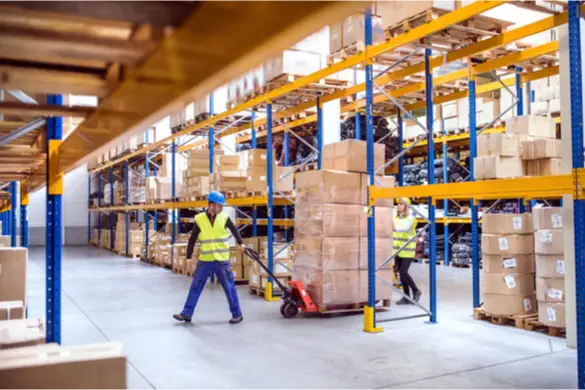
For businesses that deal with large products or many types of products, renting a warehouse is a common storage solution. A rental space allows for greater flexibility in business dealings as it is typically maintained by a separate company. Furthermore, many commercial office complexes and sublet office spaces are not zoned for warehousing goods. Managers wishing to take advantage of industrial warehouses need to understand how to get the best lease. Here is a guide on how to find the right industrial rental warehouse space for your business.
Determine What Space You Need
The first aspect of renting a warehouse to consider is what space the business needs. Rental warehouses are defined by floor space, features, and location. Managers will need to start by outlining their budget as this will narrow the search considerably. They should consider how much space their business needs to use to be effective. Some buildings can lease out percentages of their floor space as needed. Warehouses also come with features like wide loading bays, onsite offices, reinforced floors, and high ceilings. Managers should take these factors into consideration before choosing a rental warehouse.
Find A Location That Works
Finding a location that satisfies the businesses’ needs is an important step to setting up a warehouse space. Most business managers should rent a location near the majority of their clientele to reduce travel time. This is especially true of properties that don’t have onsite daily office rentals space as this makes it less time-consuming for management to check their inventory. Managers should also consider local proximity to infrastructure like interstate highways and railways. Finding the right location ensures that businesses can make the most of their rented warehouse.
Check The Warehouse’s Utilities
A warehouse’s utilities can be a determining factor in the decision-making process, especially for long term leases. Managers should check what utility services are offered, and how much they will be paying for them. For example, a warehouse with energy efficient lights will be cheaper in the long term. Managers should also consider the type and quality of fire protection systems as these will safeguard their products. Some warehouses are also modular and the space can be modified to fit the needs of specific businesses. Managers should consider these utilities before deciding on a rental warehouse space.
Visit The Property Personally
Once they have a good idea of what property they want to rent, managers should visit the location personally. Giving the warehouse a personal walkthrough allows you to check the space for any problems that it may not show on it’s listing. This visit should also be used to check the local area around the warehouse. Managers should try to gauge what traffic will be like during peak times and what infrastructure is near the location.
Understand The Lease’s Terms
Before signing a lease it is worth it to understand the fine print in the contract’s terms. Commercial leases like restaurant lease agreements fall into two categories, gross leases and net leases. In a gross lease, the lessee pays one lump sum per period that covers fees, taxes, utilities, and maintenance. In a net lease, the lessee pays a base rent amount, plus a percentage of taxes and utilities based on the percentage of the warehouse space they use. Net lessees also pay for any maintenance, cleaning work, or other expenses associated with industrial warehousing. Net leases can be cheaper overall, but gross leases are less complicated. You should weigh the pros and cons of each type of lease before renting a warehouse.
In order to make the most of their industrial warehouse space, managers need to know how to pick the right space. First they should begin by deciding what kind of space they need. After this they need to consider the location of the warehouse and what infrastructure it can access. Different warehouses have access to various types of utilities that should be considered. Visiting the property personally allows managers to get an idea of how they can use the space. Finally, understanding the difference between a gross and a net lease, as well as the advantage of each is important. Understanding all of these principles allows managers to find the best industrial rental space for their business.
 Business First Family Business, Accounting, Finance, Investing, Marketing And Management
Business First Family Business, Accounting, Finance, Investing, Marketing And Management